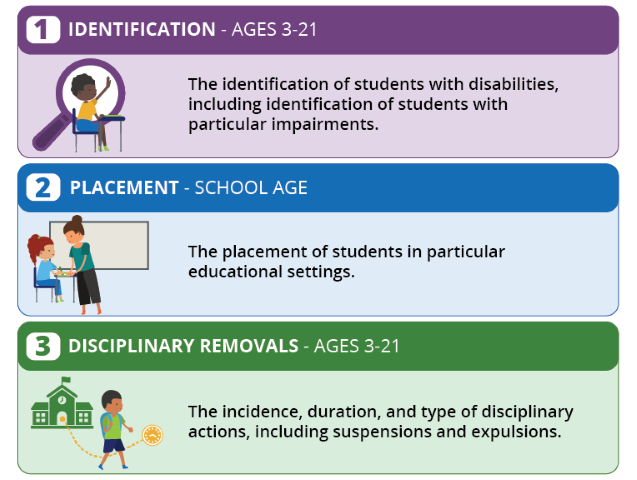Significant Disproportionality
Significant Disproportionality Requirements
Under 20 U.S.C 1418 (d) and 34 Code of Federal Regulations (CFR) §300.646, states must provide for the
collection and examination of data to annually determine whether significant disproportionality based on race or ethnicity is occurring in the State and local education agencies (LEAs) with respect to three areas.
Significant Disproportionality Requirements (PDF)
State Definition of Significant Disproportionality
The State has the discretion to define what constitutes significant disproportionality for the LEAs and the State in general. However, the State's definition of significant disproportionality must be based on an analysis of
numerical information and may not include consideration of the State's or LEA's policies, procedures, or practices.
The Texas Significant Disproportionality Regulation Crosswalk lists elements within the federal regulations and corresponding actions that define significant disproportionality in Texas. Texas applies the methods found in 34 §CFR 300.647 and exercised the flexibilities found in subsections (b) and (d) of the regulation.
Requirements for LEAs Identified with Significant Disproportionality
When the State identifies LEAs with significant disproportionality, the LEA must meet the requirements found at 34 CFR §300.646 (c) and (d). If the LEA is found to be SD in one or more of the SD categories as published in the Results Driven Accountability (RDA) report for three years in a row, LEAs are required to:
- Review (and, if appropriate) revise policies, procedures, and practices;
- Reserve the maximum amount of funds to be used for early intervening services; and
- Report on the revision of policies, procedures, and practices.
Resources
- Assistance to States for the Education of Children with Disabilities; Preschool Children with Disabilities
- Differences Between CCEIS and CEIS
- IDEA B MOE and CEIS Guidance Handbooks
- Office of Special Education Programs (OSEP) Memo 07-09
- Office of Special Education Programs (OSEP) Memo 08-09
- Managing an Identity Crisis: Forum Guide to Implementing New Federal Race and Ethnicity Categories
- Race and Ethnicity in Special Education: Difference Between Data Collection and Data Reporting
- Requirements of Coordinated Early Intervening Services
- Significant Disproportionality at a Glance (2024)
- Texas Significant Disproportionality Updates and FAQs (April 2025)
- The Data Center for Addressing Significant Disproportionality (DCASD)
Families: Special Education or IEP-Related Questions?
Phone: 1-855-SPEDTEX (1-855-773-3839)
Educators: Special Education Resources
Office of Special Populations and Student Supports
Department of Special Education:
Email: sped@tea.texas.gov
Department of Review and Support:
Email: ReviewandSupport@tea.texas.gov




